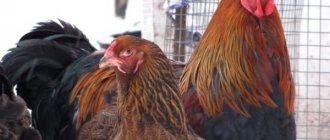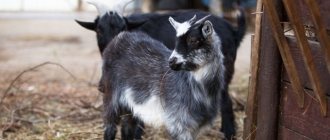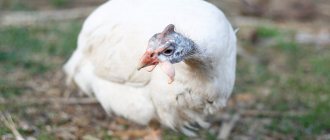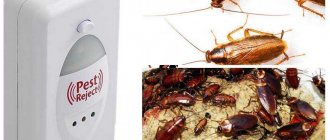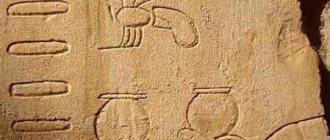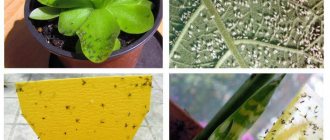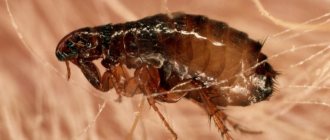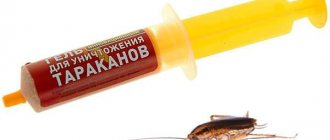The gray Caucasian bee, which lives in the mountains, is a real favorite breed among breeders and beekeepers; it ranks 2nd in popularity in the world . Insects are attracted by their unpretentiousness to climatic conditions, calmness, hard work, and the unique beneficial properties of the honey produced. Cunning, resourceful, Caucasian women carefully protect their nests from enemies, while they themselves are not averse to stealing honey from their neighbors. What are they?
Description and appearance
Natural habitat is the Caucasus Mountains. This area is characterized by a moderate mild climate, normal precipitation, and small seasonal temperature changes. In the valleys and mountain gorges there are many plants suitable for making honey. This breed was appreciated by beekeepers of the mid-twentieth century. Now Caucasian women are bred not only in their homeland, but also in central Russia.
These hymenoptera are called gray for a reason; they are easily recognized by their silver color and the absence of yellow stripes. Proboscis of mountain bees up to 8 mm long. This is an adaptation to difficult conditions; they can easily collect nectar from even the most inconvenient plant. A typical working Caucasian woman weighs 80 mg.
Origin
Natural range: Caucasus Mountains (Georgia, Armenia and Azerbaijan). This region is characterized by a mild and humid climate. The area is characterized by temperature fluctuations throughout the day. Winters here are not harsh and short. There are many honey plants in the gorges and valleys.
Beekeepers and entomologists have been interested in this breed for a long time. But they began to actively breed Caucasian bees in central Russia approximately in the middle of the last century. Now the Caucasian Mountain bees have mastered not only the southern, but also the middle regions of Russia. Amateur beekeepers can find this breed further north.
It has several populations. If you plan to breed the breed in northern regions with cold winters, we recommend choosing the Mingrelian population.
Types of Caucasian bees
There are several types of Caucasian beauties, differing in appearance and behavioral characteristics:
Yellow Caucasian bees are the most beautiful of the Caucasian species, living in the mountains of Azerbaijan and Armenia. The color is bright yellow and gray stripes. They are accustomed to a mild, warm climate; Caucasian women have difficulty surviving the harsh winter. Experienced beekeepers have noticed that a swarm can contain up to 5 queens. Watching them, the swarm selects a strong, fertile one, after which they kill the rest.
Being wonderful thieves, attacking other colonies, bees do not take good care of their own hive.
| Attitudes towards theft from neighboring families | Race: gray mountain Caucasian | Race: Caucasian Yellow Valley | Race: Central Russian |
| Same with locals | 5 | 8 | 11 |
| More than the locals | 14 | 29 | 5 |
They produce propolis and pollen remarkably well, the yellow ones work actively, and show excellent honey collection statistics. The only weak point is the low wax performance.
Gray mountain bees - include several subspecies (Mingrelian, Kakheti, Abkhazian, Imeretian, valley, etc.) have become widespread in Abkhazia and the Caucasus. These bees do not attack other colonies too often, but they know how to defend themselves.
The most useful property is that Abkhazians easily find plants for collecting nectar; their productivity is not inferior even to active Central Russian ones. They do not tolerate transportation or winter well.
How is honey collection going?
The majority of Caucasian bees, resistant to frost, begin to collect honey with the appearance of the first flowers. The end of summer occurs late and depends on the availability of food supply (for example, in the southern regions, wild flowers continue to bloom until the beginning of December). Worker bees leave the hive at dawn when the temperature is low, returning late (after or at sunset).
Insects are constantly looking for new areas with honey plants; high air humidity or drizzling rain do not interfere with nectar collection.
Characteristic differences
Despite their “hot” Caucasian roots, they rarely attack beekeepers. When the hive is manipulated, they do not even stop doing their work.
Another distinctive feature is the earliest start of the summer season among insects. Individuals of the Abkhazian breed finish seasonal work later than all others, which confirms their high productivity and working capacity.
When characterizing Caucasian women, it is worth noting their ability to control the number of eggs laid by the queen, therefore, a beekeeper who sets out to increase the bee colony must supply additional honeycombs, the queen will fill them with eggs the same day.
Low swarming ability (degree of swarm instinct). It is observed in only 7% of families.
They are also distinguished by their high level of enterprise when searching for honey plants and collecting the maximum amount of honey. Caucasian women easily evaluate the quality and concentration of nectar and choose the best, which is why they create honey of the best quality.
A positive characteristic of these bees is their reverent attitude towards their home. The production of a huge amount of wax and propolis is enough to build a strong house. Holes in the hive are also repaired with wax and frames are connected.
Characteristics and features of the breed
Evolutionary stages have revealed different characteristics and qualities in the Caucasian breed, which help to successfully adapt to the external environment. The main difference is the long working season. Insects fly away to collect honey early in the morning and return closer to night. The period lasts from the first month of spring until October or November.
The Caucasian breed of bees is little susceptible to weather changes. Individuals fly in light rain and fog. Other insects usually stay in houses. Before purchasing bee colonies, you need to take into account that the “wards” easily switch between honey plants and collecting nectar to the detriment of laying eggs by the queen. This allows you to increase the volume of bee products.
Appearance:
- color - from silver-gray to gray-brown shades, yellow or orange tones are less common;
- weight – adults 75–90 mg, barren uteruses 170–180 mg, fertile females 200–210 mg;
- proboscis – narrow, long, 6.5–7.2 mm, reaching a maximum of 7.5 mm.
The breed is distinguished by a low tendency to aggression and poor resistance to cold temperatures. Theft occurs only when the apiary is not properly organized or the honey collection is poor.
Bees of this breed produce a large number of bonds to cover the inside of the nest. The frames fill efficiently without spreading material throughout the hive. They are rightfully considered excellent pollinators; they fly around various honey plants.
Advantages and disadvantages
The advantages of Hymenoptera include:
- Ability to extract honey under changeable weather conditions and low honey yield
- Easily adapts to a variety of plants
- The length of the proboscis allows you to collect nectar from any flower without effort
- Low swarming, this allows an experienced beekeeper to quickly put them into working condition
- Indifferent to the work of the beekeeper with the hive
The disadvantages include:
- Severe tolerance to the winter period, careful care is required, exclusion of honeydew impurities from the feed, constant monitoring
- They have poor immunity, so rock diseases are common
- The larvae are scattered, which greatly complicates the collection of honey for the beekeeper
- Gray bees are adapted to crystal-clear melted mountain water, so transporting them closer to the habitat areas of Central Russian species is impossible
Advantages
- Caucasian bees are distinguished by their outstanding enterprise in searching for honey plants. Even with a relatively weak honey flow, they collect a sufficient amount of honey.
- They are active in searching for new sources of nectar. They visit plants with low sugar content and easily switch from weak to strong.
- They show high productivity compared to other breeds on sluggish harvests. A stable daily weight gain of a hive can be up to 1.5 kg.
- Slight swarming. Families easily come out of the swarm state when a small bribe appears.
- There is a tendency of families to quietly change and cohabitate queens.
- The breed is not aggressive and has a very calm, docile character. Even when inspecting the nest, these bees continue to work on the honeycomb.
- Good ability of families to protect the nest.
- Gray Caucasian Mountains are the best pollinators of clover and legumes.
- Families collect a lot of propolis.
Caucasian bee queens
It is characterized by an elongated body, a large rounded abdomen, and several times smaller visual organs. The only difference in the internal structure is the highly developed ovaries. The queen is slow, inactive, and can rarely be seen outside the hive, because she moves with effort. The “mistress” is surrounded by workers who provide her with food and care. Life expectancy is up to 5 years.
Infertile queens weigh 200 mg. The pregnant uterus gains 30-40 mg and can lay up to 1600 eggs per day during the active period. Swarming often limits the queen's fertility. When the bribe arrives, they fill the fruit cells with honey. The uterus reduces the amount of egg production.
Conclusion
The Gray Caucasian bee breed should be used wisely. For example, it is ideal for use in weak conditions. As a good pollinator, it is advantageous to use in greenhouses, in limited areas for growing weak honey plants that require pollination (for example, legumes).
The breed is strong, designed to survive, but this does not mean that it is absolutely protected from external factors. Like any bee colony, Caucasian sulfur hives require monitoring and care.
This is interesting How to get rid of hornets
Video: apiary, Caucasian bee.
Wintering and maintenance
Wintering is a difficult period for insects and the beekeeper who decides to care for them. There are different populations of rocks, some have a hard time surviving the cold, while those living in the highlands can cope with difficult conditions more easily. It is necessary to provide Caucasian women, accustomed to a warm climate, with the right food, add sugar syrup to the hive, and add medicine for nosematosis.
They love ventilation, but do not tolerate excessive dampness in the hive.
The beekeeper selects strong, hardy Caucasian females. It makes no sense to leave sick, weak individuals in the hive, because they will not be able to survive the harsh winter.
Wintering in the wild gives more advantages, because... Hymenoptera have the opportunity to fly on warm days; another advantage is that the problem of drafts and too damp hives is eliminated, they will only bring disease to the entire swarm.
Productivity
The Caucasian breed is distinguished by its productivity on meager bribes. With abundant and average honey harvest, individuals lose to almost all types of bees. With a small bribe, insects collect up to 20 kg of nectar, while other breeds collect 11–13 kg.
If there is an abundance of bribes, then the whole family goes to collect honey. The queen bee is limited in food, and the nectar is placed on frames around the edges or in a nest with brood. Then the individuals gradually rebuild the top of the hive. As a result, there is beebread and brood on the honeycomb frames, which makes it difficult to pump out honey, so it is recommended to keep Caucasian bees in beds with 24–26 frames. Multi-level hives are not advisable.
Habits of Caucasian women
Among the main habits of mountain bees:
- react neutrally to inspection and intervention (without damage to the hive) from the beekeeper;
- prone to theft;
- quick transition to work;
- constant activity, especially during the honey harvest period, when there are few honey plants nearby, they try to find them in every possible way;
- They are not prone to playfulness.
The desire to steal honey from third-party hives, often from other families in neighboring apiaries, is due to the fact that hardworking bees try to find as much nectar as possible and bring it to their house. This type of behavior should not always be considered a disadvantage.
Peculiarities of foraging in the gray mountain bee
High mountain Georgian bees are distinguished by their rapid response to the presence of feeders with sugar syrup. They can detect the presence of sugary substances even if they do not emit any odor, this is important for storing honey.
In obtaining food, it shows thieving tendencies, penetrating into the nests of other species of bees, but it carefully guards its honeycombs.
